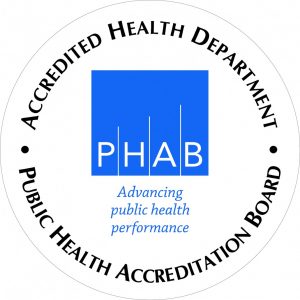With the implementation of the new State Mandated Sewage Program rules, Marion Public Health will be holding public meetings to discuss the Operation & Management Program phase of the Operation Permit renewals for existing septic systems. This will include a fee and must be renewed every 5 years for gravity systems and annually for all other systems.
Per Ohio Administrative Code Chapter 3701-29, Section 19(A)(2) “Boards of health shall work with interested stakeholders to develop a timeline and process for phasing in O&M (Operation and Maintenance) management for prior installed systems and should consider risk factors such as system age, complexity and risks to public health when establishing the criteria and process for phasing in prior installed systems”
February 12th 6-7pm, Pleasant Senior Center, 1036 Owens Rd W-limited space
February 20th from 3-4 pm at Marion Public Health located at 181 S. Main Street
After considering stakeholders comments, Marion Public Health plans to have the O & M Management Program developed by March 1st, 2015, with implementation to begin soon after.
When the homeowner originally purchased their individual household septic treatment system installation permit in Marion County, they were automatically given an operation permit. With this new state regulation, the operation permit will expire and will need to be renewed. Marion Public Health has set 5 years for gravity systems and annually for all others.
To be able to renew, the homeowner must prove that he is maintaining his system according to the manufacturer’s specifications. For gravity systems, this is just a matter of sending a copy of the last pump slip to the local health department along with the application for renewal. For all others, a service agreement with a registered service provider is also needed.
If a homeowner wishes to be their own service provider they can do so, but they must take the sewage test either on line or here at the health department and register with us as a service provider. They must also obtain certification from the manufacturer to be able to service the system if it is required by the manufacturer. The registration fees will be dropped if the homeowner is only servicing their own system.
All systems must have a new operation permit. There is no “grandfathering”. Since we have so many systems out there already, the state has allowed each local health department to develop a phase in plan for getting everyone’s operation permits updated. The plan will take into account stakeholders comments and public health risk factors. However, the EPA approved NPDES (National Pollution Discharge Elimination Systems) must be incorporated into the O & M Program at the beginning. Those are discharging systems that were put in after Jan 1 2007 that had to obtain permission from the EPA to discharge to waters of the state via tiles, creeks, ditches, etc.
Any new installations/replacements/alterations and NPDES systems are required to be automatically placed in the program and have an operation permit expiration date based on the complexity of the system.
Why do we have these new rules? Two separate studies were conducted by the Ohio Department of Health that found that 31% of all septic systems in Ohio were failing. Failing septic systems contribute to contamination of the ground water, wells, streams and rivers with high levels of bacteria, viruses, and Nitrates. The nitrates deplete oxygen which kills aquatic life. Nitrates also can get in well water and cause blue baby syndrome from a lack of oxygen and can even cause death when an infant ingests the well water used in formula mix, etc. It is important to know that boiling the water does not remove the nitrates, it actually increases the concentration in the water, making the situation worse. Some bacteria and viruses can cause severe illness in people and can lead to outbreaks of Hepatitis A, Cryptosporidium aka “Crypto”, Giardia, E coli, Salmonella, encephalitis, etc. Studies are also being conducted that may associate sewage contamination with some birth defects. A failed septic system poses a health risk to homeowners and neighbors alike. It can also plug an outlet tile that serves several houses on a street and cause back up for everyone. Between 1989 and 2007, Ohio taxpayers spent $63 million/ year through low interest loans and grants on getting sewer to communities with failing septic systems. There are still approximately 1,800 privies and outhouses still in Ohio.
It is important to note that proper maintenance of your household septic system can prolong the life of your septic system and prevent the need for costly repairs.
If you have any questions regarding the above, please feel free to contact Sandy Bridenstine at Marion Public Health, 740-692-9112 or visit our website at http://www.marionpublichealth.org/household-sewage-treatment-systems or the Ohio Department of Health website at http://www.odh.ohio.gov/odhprograms/eh/sewage/sewage1.aspx

